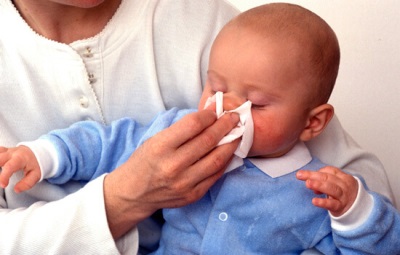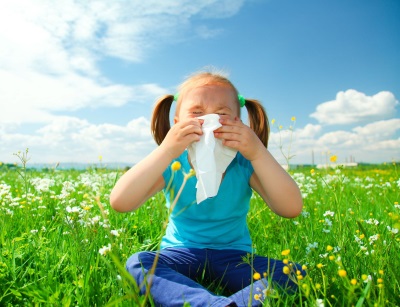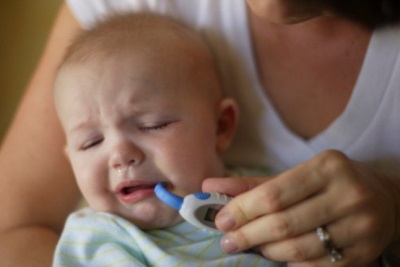Treatment of rhinitis in a child by Komarovsky
A runny nose can be a symptom of various diseases and occurs in childhood quite often. It is based on an increase in mucus production in the membranes of the nasal passages. If a runny nose appears in a child and greatly disturbs a crumb, parents seek to help the baby by any means. What treatment of rhinitis advises Dr. Komarovsky and how not to harm the baby with a rhinitis, and effectively eliminate such an unpleasant symptom?
The reasons
The most common cause of a runny nose in children is a famous doctor SARS. Such a runny nose can occur both with temperature and without temperature. An excessive amount of mucus, according to Komarovsky, favors protective reaction of the child's body from viral infection. Firstly, viruses are removed from the nasopharynx along with mucus, and secondly, in the mucus itself there are substances that can neutralize the infectious agent.
The second most common cause in children of rhinitis Komarovsky calls allergy. It can be caused by washing powder, flowering plants, dust, animal hair and other factors. If a child has a prolonged, prolonged runny nose, the most likely cause will be an allergic reaction. In the treatment of the main condition will be getting rid of the allergenAccording to Komarovsky, only a doctor should prescribe any medication for such a runny nose.
How to find the cause of allergic rhinitis, how it differs from the infectious and how to treat a child, see the transfer of Dr. Komarovsky.
Babies
How to cure a runny nose when you get sick of noses when teething, look in the program.
It is believed that from the common cold helps instillation into the nose of breast milk. What Dr. Komarovsky thinks about this can be found in the presented video.
Treatment
Komarovsky focuses on the fact that a rhinitis in most cases is necessary for a child to get rid of a viral infection, but the mucus in the nasopharynx performs its protective function only under certain conditions. The most important of these is a certain consistency.
If the mucus in the nasal passages dries out or is severely thickened, it not only does not help get rid of the viruses, but also becomes an environment in which bacteria easily develop. It boosts risk of viral infection in bacterial viral. That is why the main condition for the treatment of rhinitis Komarovsky calls support the optimal viscosity of mucus. Here are the methods recommended by the famous pediatrician:
- Plentiful Drink. It will thin the mucus by thinning the blood.
- Creating suitable indoor conditions. Especially fast nasal mucus dries out when the air temperature in the room is above + 22 ° C and in very dry air.
- Walks in the open air. If the baby's temperature is normal, do not leave the crumb at home.
- Moisturizing mucous saline. You can purchase it at a pharmacy or cook at home by combining a liter of boiled water and a teaspoon of salt. Solutions based on sea salt, such as Aquamaris, are also suitable. They should be buried in the nose of the baby with a runny nose every hour, 3-4 drops.
- Instillation in the nose of oil solutions. They, covering the mucous with a thin layer, prevent its drying out. Komarovsky recommends the use of ekteritsid, olive oil, oil solution of vitamin A, liquid paraffin, tocopherol solution. These solutions can be instilled 2-3 drops in every turn every two hours.
If the runny nose is long and such remedies do not help, Komarovsky recommends consulting a doctor to rule out the allergic nature of this symptom.
Vasoconstrictor drugs
Komarovsky recognizes that such drugs quickly and effectively eliminate the cold. They constrict blood vessels in the nasal passages, which leads to a decrease in mucosal edema and a decrease in mucus production. Examples of such drugs include otrivin, nazol, sanorin, naphthyzine, tezin and many other drugs.
According to Komarovsky, their differences consist only in the duration and strength of the impact, and the mechanism of the action on the mucous membrane and the side effects are very similar.
In this case, a well-known doctor emphasizes that the use of such drugs eliminates only the symptom itself, without affecting the cause of the common cold. If parents decide to use such drugs in the treatment of a cold in a child, a popular pediatrician advises to consider such points:
- For any vasoconstrictor drugs enough addictive, because of which the drug is used more often or in an increased dose. This increases the risk of side effects associated with exposure to all vessels, and not just to the nasal area.
- If a follow the rules of application (do not exceed the dosage, use no longer than a week), then the frequency of side effects is low.
- Local side effects are sneezing, burning and stinging in the nose, swelling of the mucous membranes, dryness of the mouth mucous membranes. Common adverse reactions include dizziness, impaired heart rate, visual disturbances, sleep problems, increased pressure, vomiting and other serious phenomena.
- When choosing a vasoconstrictor drug for a child, it should be remembered that in pharmacies have special forms for children, the concentration of the active substance in which is lowerthan in adult medicine.
- Important read the instructions for the drug and make sure that the remedy is not contraindicated in children.
Antibiotics
Komarovsky is categorically against instillation of antibacterial solutions in the nose, because it is:
- Does not help with viral rhinitis, And after all he meets most often.
- Does not help with allergic rhinitis.
- Allergy the body.
- Addictive to the drug, and if it is required for a serious infection, the effectiveness of the drug will be insufficient.
Prevention
To prevent the appearance of a cold, as a symptom of ARVI, Komarovsky advises through such actions:
- Wear a crumb for the weather and avoid hypothermia.
- Monitor personal hygiene and cleanliness in the nursery.
- Strengthen children's body defenses with hardening procedures and a balanced diet.
- Avoid crowds in the season of viral infections.
- Isolate the sick family member from the child.
















